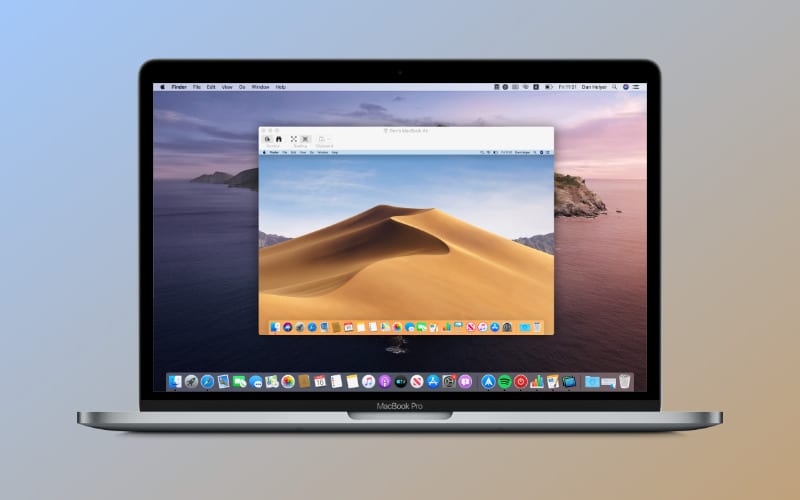Is your Mac’s screen zoomed in and you’re not sure how to fix it? Don’t worry, you’re not alone! Many Mac users find themselves in the same situation. The good news is that there are several easy ways to fix a zoomed-in screen on your Mac.
One of the most common causes of a zoomed-in screen is a misconfigured display setting. To check this, go to System Preferences > Displays > Display Resolution. Here, you can choose between Default for display or Scaled. For regular screens, without Retina Display you can pick a Display Resolution.
If your display settings are already set correctly, another potential cause of a zoomed-in screen is an accidental use of the shortcut keys [Ctrl] + scroll up with the mouse (zoom in) or [Ctrl] + scroll down with the mouse (zoom out). If this has happened, simply press [Ctrl] + scroll down with the mouse to zoom out again.
Finally, if none of these solutions have worked, it’s possible that a third-party app may be interfering with your display settings. To check for this, open Activity Monitor and look for any suspicious processes that may be running in the background. If you find anything suspicious, quit it by selecting it and clicking “Quit Process”.
We hope these tips help you get back to normal viewing on your Mac! If none of these solutions have worked for you and your screen remains zoomed in, please contact Apple Support for further assistance.

Restoring Mac Screen to Normal Size
To get your Mac screen back to its normal size, follow these steps:
1. On your Mac, click the Apple menu in the top left corner of the screen and select System Preferences.
2. Click Displays from the list of options on the left side of the window.
3. On the right side of the window, under Resolution, you will see a drop-down menu. Select Scaled and then select one of the options that are closest to your preferred screen resolution.
4. Click Apply when you’re done making changes and you should see your Mac screen return to its normal size.
Enlarged Mac Screen: Causes and Solutions
Your Mac screen may be enlarged because you have changed the Display Resolution from the Displays settings in System Preferences. In this section, you can choose between Default for display, Scaled, and Display Resolution for regular screens without Retina Display. If you have selected a higher resolution than what your display is capable of, the image on your screen will be larger than usual. To fix this issue, simply select a lower resolution or choose Default for display.
Unzooming a Mac Screen Using a Mouse
To unzoom your Mac screen using your mouse, press and hold the [Ctrl] key on your keyboard and scroll down with your mouse wheel. This will gradually reduce the zoom level of your screen until it is back to normal size. You can also use the [Cmd] + [-] shortcut to quickly unzoom the screen to its original size.
Understanding the Causes of Mac Screen Zoom In
The most likely reason your Mac screen zoomed in is that the Accessibility feature of screen zooming was turned on. This feature allows users to make everything on their screen appear larger, making it easier to read or navigate. In order to turn this feature off, you can press Command-Option-8 on your keyboard, or if you are using a Magic Mouse, you can use one finger and two taps to zoom back out.
Zoom Issues on Macbook Pro
Your Macbook Pro may be zoomed in due to the Display Zoom feature. This feature is enabled by default and can cause your screen to appear zoomed in. To disable it, go to Apple > System Preferences > Accessibility > Zoom and uncheck the box labeled “Use Display Zoom”. This should restore your Macbook Pro’s display back to its normal size.
Fixing an Enlarged Screen
To fix an enlarged screen, you will need to decrease the resolution of your display. To do this, press the Ctrl + Shift and + keys together. This will make the items on your screen appear smaller by decreasing the resolution of your display. If you want to further adjust the size of elements on your screen, you can also use Windows’ built-in scaling options. To access the settings, open the Settings app, go to System > Display, and then choose one of the scaling options from the drop-down menu. Once you have chosen a scaling option that works for you, click Apply and then OK to save your changes.
Reverting a Computer Screen to its Original Zoom Level
To unzoom your computer screen, start by holding down the Control key. Next, locate the number zero (0) key on your keyboard and press it to return your screen to its default zoom level. Depending on the device you are using, you may also be able to use the scroll wheel of your mouse to adjust the zoom level of your screen. If you have a touchscreen device, you can also use two fingers to pinch and zoom out. Once complete, you should now have an unzoomed computer screen.
Troubleshooting an Oversized Screen
The size of your screen is likely oversized due to the settings of your display. The Scale and Resolution settings of your display are responsible for how the images and text on your screen look. If these settings are not properly adjusted, your screen may look oversized. To adjust these settings, you can go to Start > Settings > System > Display and adjust the Scale and Resolution options to a setting labeled (Recommended). This should help make your screen look proper again.
Forcing a Mac to Zoom Out
To force your Mac to zoom out, you will need to use the keyboard shortcut Option + Command + – (minus). This will decrease the zoom percentage until it reaches the default view. You can also adjust the zoom level manually by selecting the View menu at the top of your screen, then selecting Zoom Out.
Troubleshooting Mac Zoom Issues
It is possible that the zoom-out feature has been disabled on your Mac. To check this, go to Apple menu > System Preferences, then click Trackpad. Click the Scroll & Zoom tab and ensure that the “Zoom in or out” option is enabled. If it is already enabled, uncheck the box and re-check it as this may solve the issue. Additionally, a few applications may set their own zoom settings, so if you are still having trouble zooming out it may be worth checking any applications you recently opened or installed to make sure they don’t have their own zoom settings enabled.








